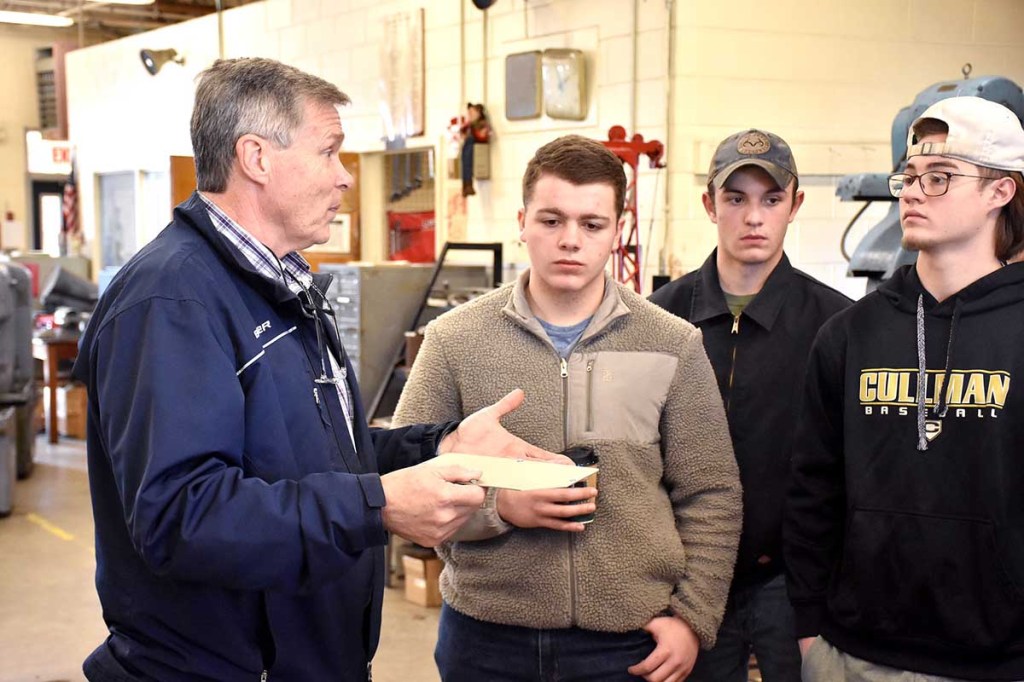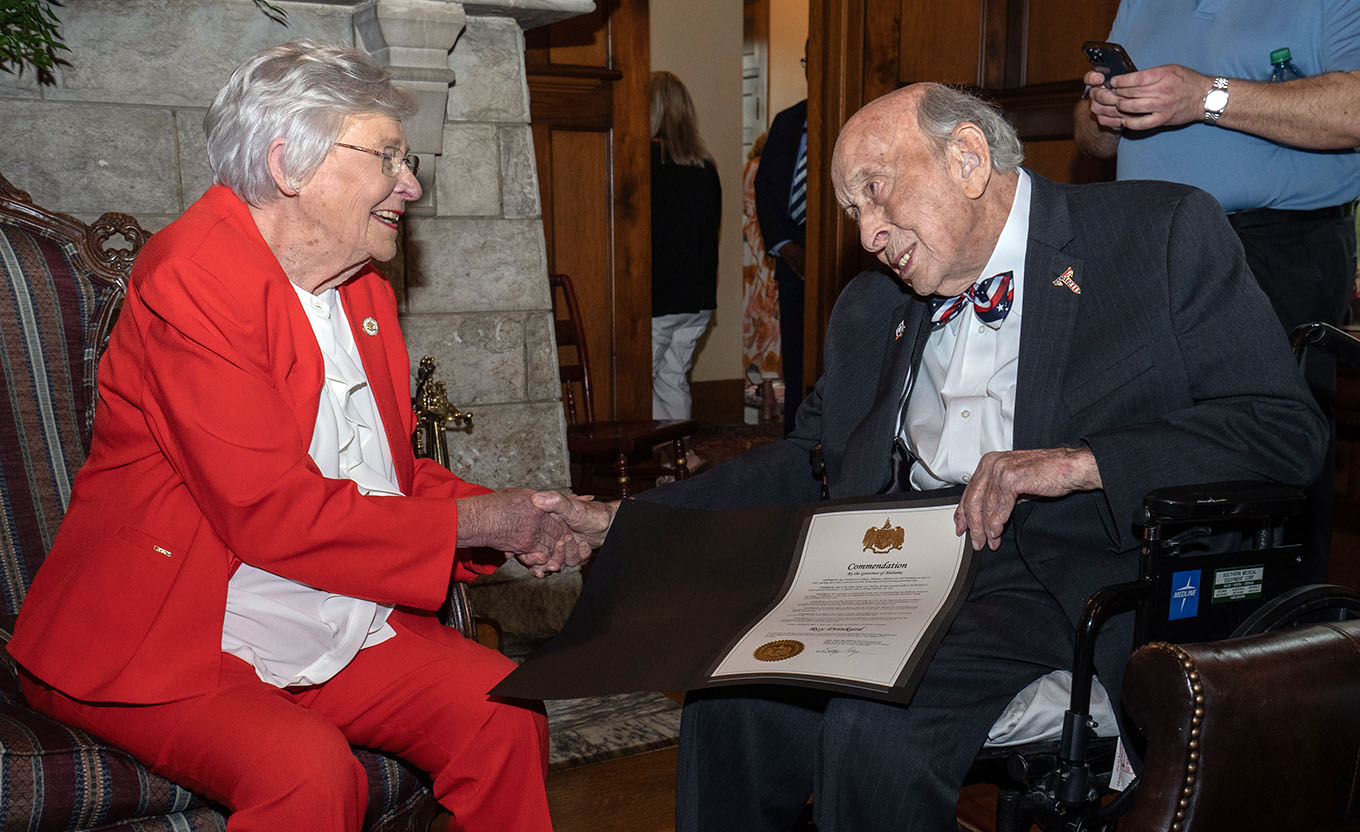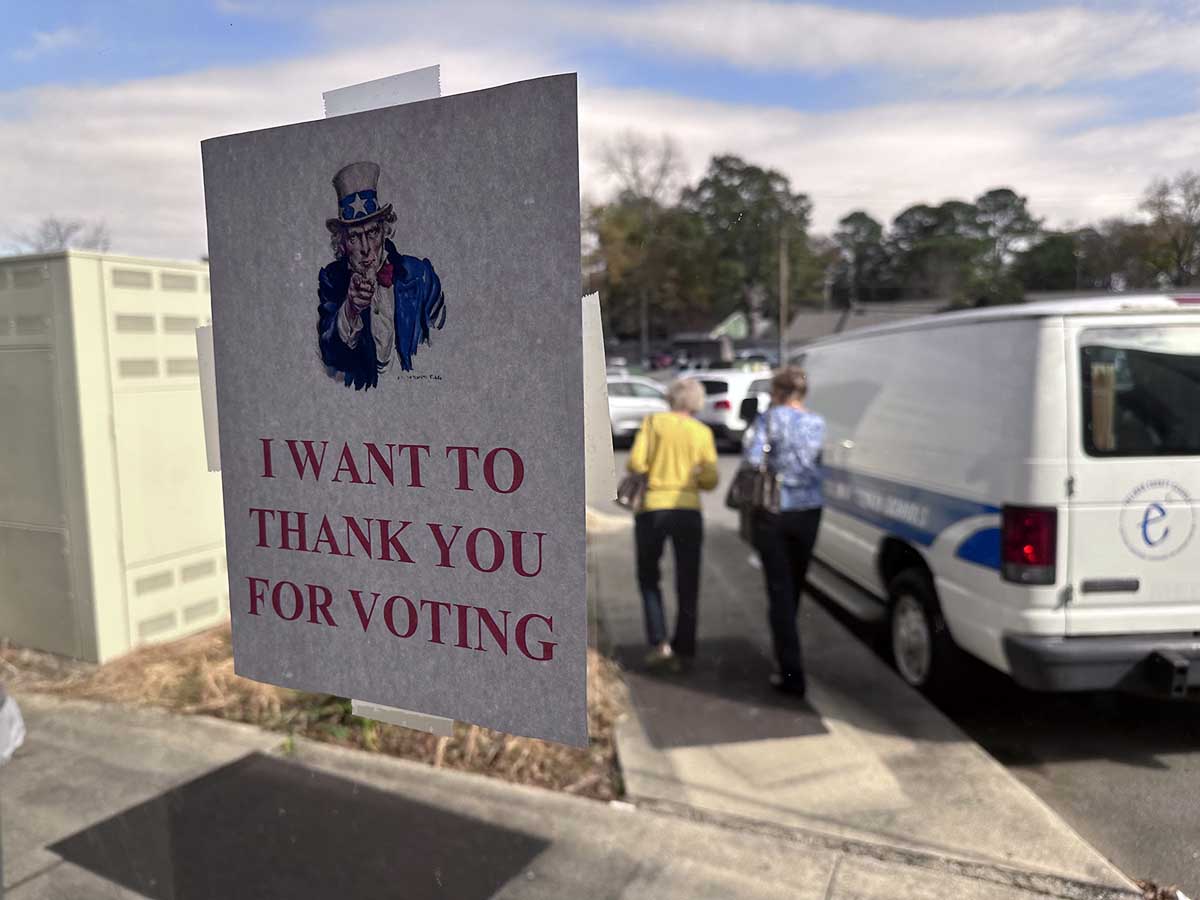Out of this world: Tech Academy students making panels for space station
Published 5:30 am Friday, February 1, 2019

- HUNCH co-founder and Program Manager Bob Zeek, from left, speaks with Cullman Area Technology Academy students Garrett Smith, Garrett Evans and John Converse about the panels they helped make that will be part of storage lockers in the International Space Station.
Precision machining students at the Cullman Area Technology Academy have recently been hard at work on a project that is literally out of this world.
Through the National Aeronautics and Space Administration’s HUNCH program, the students have been making panels that are a part of Single Stowage Lockers that will soon be sent to the International Space Station.
Trending
HUNCH, or High Schools United with NASA to Create Hardware, is a program that lets high school students get hands-on experience with the agency through fields like machining, welding, computer design, sewing or cooking.
The school hosted two representatives from the program Thursday morning who spoke to the students about the work they have been doing and showed them one of the completed lockers that their parts will help build.
HUNCH co-founder and Program Manager Bob Zeek said the program is in place at 155 schools in 28 states, with 34 other schools joining the CATA to work on the storage lockers for the International Space Station.
He said the program does help NASA save money by having students help with several projects that would otherwise be built by a company like Boeing or Lockheed Martin, but the main reason that the agency works with high schools is to give students some real-world experience outside of the classroom.
“We’re reinvesting the difference of the money into the schools,” he said.
While NASA may be letting high schoolers work on some of their projects, the standards for those projects are just as strict as everything else that the agency sends to space.
Trending
HUNCH Hardware Support Specialist Bill Gibson said the panels the students worked on have very specific requirements with a tolerance of .005 inches, which is around the thickness of a sheet of paper, and there were very few pieces produced that did not meet those requirements.
“I was impressed with how little out-of-tolerance work they produced,” he said. “The quality of work that they did is outstanding.”
CATA Principal Billy Troutman said the HUNCH program is a win-win for the school and NASA because it lets the students get experience working with specialized equipment that they otherwise wouldn’t get a chance to use and it provides NASA with the parts that they need.
“They provide the materials and a lot of very expensive tools, parts and equipment, and in turn, we make the parts.” he said. “That’s the collaborative part that’s really great.”
Students also get the honor of knowing that something that they worked on is going to be sent to space and used by astronauts on the International Space Station, he said.
Troutman said he also appreciated the visit from HUNCH representatives who spoke to the students about the quality of their work and how the school had very few parts that were rejected.
“I think it’s really cool when the NASA folks come in and brag about their work,” he said. “That speaks volumes to their attention to detail and their efforts.”
Along with the panels that they built, the CATA precision machining students will have another way to leave their mark on the space station.
Zeek said students will have a chance to sign one of the lockers that is being sent to space, and they will also receive certificates at the end of the year to show that they were part of the program.
He told the students that one of the biggest aspects of the HUNCH program is giving high schools students the experience of working on a NASA project with all of the strict tolerances and high-quality required from the work, and that may help open the door for future education or employment opportunities.
“You get to put NASA on your résumé now,” he said. “It’s going to help.”





